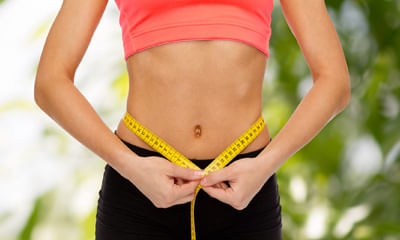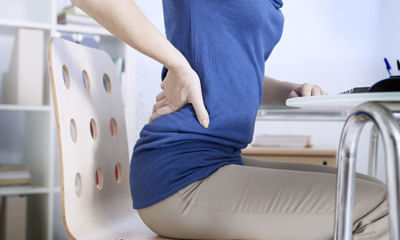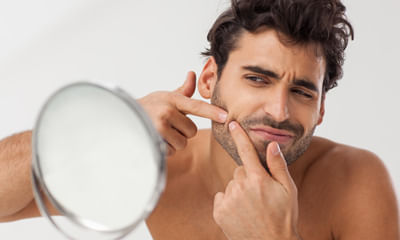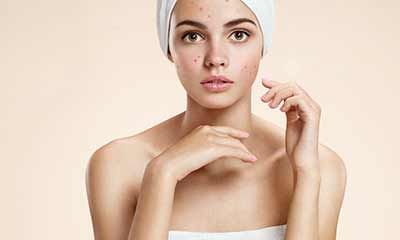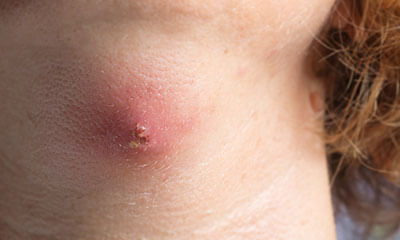Lump In Upper Chest Area
Im a 25 year old male, no medical history, 8 year tobacco/marijuana smoker, no cigarettes, semi active not really. Ive b ...
Ask Free Question
• Sports Taping- stretch the tape from both ends and apply on the affected area • Contrast Fomentation (Hot and Cold). • Contrast bath---It is a form of treatment in which knee is applied warm water followed by the immediate application of the knee with ice water. This procedure is repeated several times, alternating hot and cold. Note that the treatment should always end in the ice water, as heat will induce the body's inflammatory response, while cold helps to decrease inflammation. • Contrast bath---It is a form of treatment shoulder is applied warm water followed by the immediate application of the shoulder with ice water. This procedure is repeated several times, alternating hot and cold. Note that the treatment should always end in the ice water, as heat will induce the body's inflammatory response, while cold helps to decrease inflammation.
I'm 21 years old and I want to lose my underarm fat and belly fat, how can I lose it? ...
Ask Free Question
Get rid of underarm fat without equipment limit your daily caloric intake. Stay hydrated with plain water. Exercise at a high intensity for a minimum of 60 minutes per day, every day. .add muscle-building work to your exercise regimen. Tone your arms, back and chest muscles with resistance exercises.\ if the upper body is not used very actively, such as working with your arms, or in strength training, you may possibly develop this armpit lump because the muscle tone to tighten up this area is very little. However, the most common cause of armpit fat is wearing a bra that does not properly fit to get rid of flabby arms, start by eating fewer calories, which can help you lose fat from all over your body, including your arms. Then try to exercise for at least 150 minutes a week. You can also work on toning your arms by doing arm circles and shoulder presses with hand weights. Fight your belly fat with the right kind of exercise and the right diet. Belly fat can be effectively reduced with abdominal exercises. They help you to tone the abdominal area apart from enhancing the flexibility of the area. The most important point is that they resist the accumulation of fat around the belly region. The only thing that you must keep in mind is that you must regularly perform these exercises and be patient as nothing happens overnight. Exercises for losing belly fat some very simple but effective exercises to lose belly fat stretch 1 – lie down on a floor mat. Position your legs vertically up and stay in this position for 5 to 15 seconds. This can be repeated thrice. Stretch 2 – lie down on a floor mat. Stretch your legs straight. Place your hands behind your head and lock your fingers. Now raise your torso and bring it towards your knees. Stay in this position for 5 to 10 seconds and slowly return to your lying position. Repeat this for 15 times in sets of 5. Stretch on chair – lie down on a floor mat and position yourself with a chair so as to raise your legs on the chair. Your legs should be at 90 degree to the rest of your body. Place your hands behind your head and clasp your fingers. Now lift your torso and rise up as if you want to touch the knees. Continue for 15 minutes and repeat in sets of 3 or 4. Cycling – lie down on a floor mat. Raise your legs and rotate them as if you are pedalling a cycle vigorously. Repeat the exercise for five minutes in sets of three. Breathing exercises to lose belly fat let us briefly understand on how these work. Oxygen acts as fuel for the body. The extra oxygen that you inhale while performing the breathing exercises result in certain chemical reactions that in turn burns up more calories than you actually take in. You lose extra fat. Pavanmuktasan – for practising pavanmuktasan, take a deep breath as you lie on your back. Bend you left knee, hold your toes and pull it towards your stomach. Simultaneously lift your head and touch your bent knee. Your other leg must be straight. Breathe in and count ten. Return to your original position and breathe out. Repeat the set with your right leg. Bhujangasan – for practising bhujangasan lie on your stomach and place your hands under your shoulders. Lift your torso backwards using only the back muscles and not your hands. Hold your breath for 5-10 seconds and slowly return to your original position as you breathe out. Dhanurasan – lie on your stomach and bend your knees. Hold your ankles as you breathe in. Push your body outwards in the shape of a bow and pull your head back as much as possible. Hold this position for 10 seconds and release the posture as you slowly breathe out. Apart from these there are aerobics that also help you to lose belly fat. Regular simple workouts, like jogging, walking up and down through the stairs fast also helps to shed those stubborn belly fat. But remember, it is always advisable to seek the advice of a fitness instructor before you decide as exercise regimen for yourself in order to get the maximum results. A jelly belly can be embarrassing, but more important it can also affect your health. A large belly is a sign of dangerous visceral fat, which can amass between the internal organs and cause hormonal imbalances. Visceral fat leads to insulin resistance, which in turn leads to type 2 diabetes. It can also cause high cholesterol, contributing to cardiovascular disease. Losing stomach fat requires all-over fat loss, as there is no such thing as spot reduction. The fastest way to get rid of excess fat is with a combination of diet, exercise and lifestyle changes. Being that you want to lose your belly fast, reduce your daily caloric intake by at least 500 calories. When you eat meals, take a bite of food, place your fork down and fully chew and swallow before reaching for another bite. When choosing foods, do not eat anything that is high in fat, sodium and sugar. Keep your diet clean and high in nutrients by eating fruits, vegetables, lean meats, poultry, fish, whole grains and beans.
Hello doctor. My mother has been suffering from lower back right side pain from last 1 month ,pain is like constant not ...
Ask Free Question
Chiropractic adjustment will help. Apply Hot Fomentation twice daily. Avoid bending in front. Postural Correction- Sit Tall, Walk Tall. Extension Exercises x 15 times x twice daily
I have lots of acne and pimple on my face and I get treatment from 3 doctors but it didn't work on my face permanently. ...
Ask Free Question
What Is Acne? Acne is a common skin condition which causes spots and pimples, particularly on the face, neck, back, shoulders, chest, and upper arms. Acne popularly happens in individuals who are going through puberty. Acne can be worse for people having oily skin. Acne signs and symptoms: Acne signs and symptoms vary depending on the severity of your condition Whiteheads (closed plugged pores) Blackheads (open plugged pores) Small red, tender bumps (papules) Pimples (pustules), which are papules with pus at their tips Large, solid, painful lumps beneath the surface of the skin (nodules) Painful, pus-filled lumps beneath the surface of the skin (cystic lesions) Causes: Excess oil production Hair follicles clogged by oil and dead skin cells Bacteria Excess activity of a type of hormone (androgens) Acne typically appears on your face, forehead, chest, upper back and shoulders because these areas of skin have the most oil (sebaceous) glands. Hair follicles are connected to oil glands. The follicle wall may bulge and produce a whitehead. Or the plug may be open to the surface and darken, causing a blackhead. A blackhead may look like dirt stuck in pores. But actually the pore is congested with bacteria and oil, which turns brown when it's exposed to the air. Pimples are raised red spots with a white center that develop when blocked hair follicles become inflamed or infected with bacteria. Blockages and inflammation that develop deep inside hair follicles produce cystlike lumps beneath the surface of your skin. Other pores in your skin, which are the openings of the sweat glands, aren't usually involved in acne. What to eat: Just cutting out the damaging foods listed above will likely lead to clearer skin—especially if you were regularly consuming them before. But what if you’re already eating healthy? Are there certain foods that could give you the edge against acne? Research is in its earliest stages, but we do have some knowledge of particular foods that may help. Here are five of them: FISH OR FLAXSEED The typical Western diet contains too many omega-6 fatty acids, which are tied to inflammation. Eating more omega-3 fatty acids, such as those found in fatty fish, walnuts, flaxseed, and the like, can help tame inflammation and improve acne breakouts. GREEN TEA Green tea is filled the antioxidants that can protect from environmental stressors. Drink more green tea throughout the day. JUICING Eating more fruits and vegetables can naturally help clear up acne, and juicing is a great way to do so. Many contain beta-carotenes, which naturally help reduce skin oils, and all are naturally anti-inflammatory. Dark, leafy greens also help clear impurities from the body, PROBIOTICS These have been found to reduce inflammation in the gut, which may help reduce acne. According to a 2011 study, intestinal microflora may affect inflammation throughout the body, which in turn, can affect acne breakouts. Since pre and probiotics can reduce inflammation and oxidative stress, scientists believe they may help reduce acne breakouts OYSTERS Eat more oysters, toasted wheat germ (sprinkled on salads and steamed veggies), veal liver, roast beef, roasted pumpkin and squash seeds, and dried watermelon seeds Aloe Vera Aloe vera contains antibacterial properties, which help prevent the formation of cystic acne. Besides, it also contains essential minerals, vitamins, amino acids, proteins and enzymes, which are very good for skin. Cut aloe vera and then apply its gel directly to your affected skin. Apply this remedy 3- 4 times a week. Peel 300g of fresh aloe vera and take out aloe vera juice Drink a glass of aloe vera juice daily After washing the face, apply fresh aloe vera gel directly to your affected area Leave it on for 15-20 minutes before rinsing it off with cool water. Eat 10-20g of aloe vera daily by cooking tea or adding to your dishes Baking Soda Mix 1 tsp. Of baking soda with some cucumber juice or plain water to create a thin paste. Then, apply this paste on your affected area. Leave it on for several minutes before rinsing it off with warm water. Finally, use a moisturizer Repeat this remedy once or twice per week. Lavender Oil Apply some lavender oil on your affected area .Firstly, wash your face thoroughly Add 4- 5 drops of lavender oil to a bowl of hot water Then, use a towel to cover your head and lean over the steam for 5- 10 minutes. Repeat this remedy 2- 3 times a week. Neem Apply the paste made from some neem leaves on your affected skin. When it dries on its own, rinse it off with lukewarm water. Repeat this remedy twice daily for several days. Apply some neem oil on your affected area with the help of a cotton ball. Leave it on for 10 minutes before washing it off using warm water. Turmeric turmeric works as a natural antiseptic to help you fight off infection. Add some water or sesame oil to about 1-2 tsp. Of powdered turmeric to create a paste. Then, apply this paste on your affected area Let it sit on for about 60 minutes before washing it off with water. Add ½ tsp. Of powdered turmeric to a glass of lukewarm milk Drink this solution twice daily. Garlic Cut a small garlic slice and use it to cover the acne Leave it on for about 20 minutes before rinsing it off with water. Crush 2-3 fresh garlic cloves Then, add some fresh water and rub it directly to your affected area Leave it on 20 minutes before rinsing it off with water Remove the shells of 6 fresh garlic cloves Then, soak them in 1 tsp. Of raw honey. Store them in the dark about 2-3 months. After that, apply this mixture directly on the cystic acne. Leave it on 20-30 minutes before rinsing it off with cool water. Repeat this remedy 2-3 times per week. However, when using garlic to treat cystic acne, discontinue right away if you notice skin redness and itching. Also, remember to protect the skin before going out. Cucumber This is worth mentioning in the list of home remedies for cystic acne on nose, cheek and forehead that you should consider making use at home. Using cucumber is known as one of the best home remedies for cystic acne thanks to its high content of vitamins A, B1, B2, C, iron, etc. Slice a cucumber and wash your facial skin Apply cucumber slices on your face Leave it on for 20 minutes before washing it off with clean water Repeat this remedy 2-3 times a week what not to eat: Studies so far have focused mostly on the foods that make acne worse. Here are the five that come up most often as culprits in increasing breakouts. Avoid these for about a week, and see if you notice a difference. 1.cow’s milk. 2.sugar. 3.high-glycemic foods. 4.junk food. 5.fast food. Homeopathy has best solution for acne. For complete cure detail history of the patient is essential.
Pimples are on my chicks and lower chin very tiny and increasing day by day help me with a tablet. ...
Ask Free Question
Acne. There are several reasons for acne Thyroid Diabetes Hormonal imbalances Pcod Fibroids Genetic factors Severe stress Puberty. Homeopathy has best solution for your problem with out any side effects but history of the patient is necessary. Acne signs and symptoms Whiteheads (closed plugged pores) Blackheads (open plugged pores) Small red, tender bumps (papules) Pimples (pustules), which are papules with pus at their tips Large, solid, painful lumps beneath the surface of the skin (nodules) Painful, pus-filled lumps beneath the surface of the skin (cystic lesions) Causes : Excess oil production Hair follicles clogged by oil and dead skin cells Bacteria Excess activity of a type of hormone (androgens) Acne typically appears on your face, forehead, chest, upper back and shoulders because these areas of skin have the most oil (sebaceous) glands. Hair follicles are connected to oil glands. The follicle wall may bulge and produce a whitehead. Or the plug may be open to the surface and darken, causing a blackhead. A blackhead may look like dirt stuck in pores. But actually the pore is congested with bacteria and oil, which turns brown when it's exposed to the air. Pimples are raised red spots with a white center that develop when blocked hair follicles become inflamed or infected with bacteria. Blockages and inflammation that develop deep inside hair follicles produce cystlike lumps beneath the surface of your skin. Other pores in your skin, which are the openings of the sweat glands, aren't usually involved in acne. What to eat: FISH OR FLAXSEED The typical Western diet contains too many omega-6 fatty acids, which are tied to inflammation. Eating more omega-3 fatty acids, such as those found in fatty fish, walnuts, flaxseed, and the like, can help tame inflammation and improve acne breakouts. GREEN TEA Green tea is filled the antioxidants that can protect from environmental stressors. Drink more green tea throughout the day. JUICING Eating more fruits and vegetables can naturally help clear up acne, and juicing is a great way to do so. Many contain beta-carotenes, which naturally help reduce skin oils, and all are naturally anti-inflammatory. Dark, leafy greens also help clear impurities from the body, PROBIOTICS These have been found to reduce inflammation in the gut, which may help reduce acne. According to a 2011 study, intestinal microflora may affect inflammation throughout the body, which in turn, can affect acne breakouts. Since pre and probiotics can reduce inflammation and oxidative stress, scientists believe they may help reduce acne breakouts. Aloe Vera Aloe vera contains antibacterial properties, which help prevent the formation of cystic acne. Besides, it also contains essential minerals, vitamins, amino acids, proteins and enzymes, which are very good for skin. Cut aloe vera and then apply its gel directly to your affected skin. Apply this remedy 3- 4 times a week. Drink a glass of aloe vera juice daily After washing the face, apply fresh aloe vera gel directly to your affected area Leave it on for 15-20 minutes before rinsing it off with cool water. Eat 10-20g of aloe vera daily by cooking tea or adding to your dishes Baking Soda Mix 1 tsp. Of baking soda with some cucumber juice or plain water to create a thin paste. Then, apply this paste on your affected area. Leave it on for several minutes before rinsing it off with warm water. Finally, use a moisturizer Repeat this remedy once or twice per week. Lavender Oil Apply some lavender oil on your affected area .Firstly, wash your face thoroughly Add 4- 5 drops of lavender oil to a bowl of hot water Then, use a towel to cover your head and lean over the steam for 5- 10 minutes. Repeat this remedy 2- 3 times a week. Neem Apply the paste made from some neem leaves on your affected skin. When it dries on its own, rinse it off with lukewarm water. Repeat this remedy twice daily for several days. Apply some neem oil on your affected area with the help of a cotton ball. Leave it on for 10 minutes before washing it off using warm water. Turmeric turmeric works as a natural antiseptic to help you fight off infection. Add some water or sesame oil to about 1-2 tsp. Of powdered turmeric to create a paste. Then, apply this paste on your affected area Let it sit on for about 60 minutes before washing it off with water. Add ½ tsp. Of powdered turmeric to a glass of lukewarm milk Drink this solution twice daily. Garlic Cut a small garlic slice and use it to cover the acne Leave it on for about 20 minutes before rinsing it off with water. Crush 2-3 fresh garlic cloves Then, add some fresh water and rub it directly to your affected area Leave it on 20 minutes before rinsing it off with water Remove the shells of 6 fresh garlic cloves Then, soak them in 1 tsp. Of raw honey. Store them in the dark about 2-3 months. After that, apply this mixture directly on the cystic acne. Leave it on 20-30 minutes before rinsing it off with cool water. However, when using garlic to treat cystic acne, discontinue right away Cucumber This is worth mentioning in the list of home remedies for cystic acne on nose, cheek and forehead that you should consider making use at home. Using cucumber is known as one of the best home remedies for cystic acne thanks to its high content of vitamins A, B1, B2, C, iron, etc. Slice a cucumber and wash your facial skin Leave it on for 20 minutes before washing it off with clean water.
I got a FNAC test done as suggested by few doctors for the lumps found in my body. The test results read as follow: Clin ...
Ask Free Question
Not required, lipoma is treatable with homoeopathic treatment, if you want better treatment and medicine you can take online consultation.
Every pathological reports are nopositive. ESR and CRP are found above the average level whenever investigated. Bilatera ...
Ask Free Question
Dear user. If problem persist more than a month weight gains 5 kg. Heating affected part, and proper digestion, passing gas and body massage relieve symptoms. Smell of urine changes frequently. Gram and their products, peanut aggravate symptoms. Swelling is rational to pain intensity. If pain is superficial swelling disappear. If pain persist in muscles more than a month it makes lump. Heating disappears it. Take care.
I am 50 years old left hand fingers are feeling numb from 6 to 7 hours what should I do? ...
Ask Free Question
Pressure upon the arm nerves or vessels causing numbness, tingling or temporary paralysis of the arm may result from: Sleeping with the hand under the head Sitting with the arm hanging over the back of a chair Wearing straps or carrying a bag or rucksack Inflated cuff during measuring blood pressure Raising the Arms Above the Level of the Heart Keeping the hand (s) above the level of the heart during work or sleep can prevent appropriate blood perfusion of the hands, and cause numbness, tingling or partial paralysis of the hand (s) within few minutes. Cold In cold weather, narrowing of the arteries in the hands and fingers can prevent appropriate blood supply and thus numbness, tingling, pain or temporary paralysis of the hands and fingers. DISORDERS OF THE NECK (CERVICAL) SPINE Cervical Disk Syndrome Degenerative disc disease (DDD) or injury, like hyper-extension injury in car accidents (head moves rapidly toward the back), can result in bulging or herniated disc (s) pressing upon the cervical (neck) spinal nerves, thus causing symptoms of cervical disc syndrome: Position/movement dependent pain, tingling or numbness in the neck, shoulders, upper back, arm, hand or fingers (when the roots of cervical spinal nerves are compressed) Stumbling gait, difficulty with fine hand moves, tingling in the body or legs (when the cervical spinal cord is compressed) Symptoms can appear immediately after the injury, or develop slowly over the weeks or months. Diagnosis is made by a CT or MRI of the neck spine. Therapy includes immobilization, cold therapy followed by heat therapy, cervical traction, analgesics, muscle relaxants, physical therapy or surgical decompression of the nerve roots or spinal cord. Cervical Spondylosis Cervical spondylosis is an age-related deformation of the cervical spine; deformed vertebra or discs can press upon the spinal cord or nerve roots in the neck and cause chronic symptoms, like in the cervical disc syndrome (see above). INJURIES Disorders of the Brachial Plexus The brachial plexus is formed by the cervical nerves C5-C8 and thoracic nerve Th1. The plexus extends from the lower part of the neck to the armpit. From brachial plexus all main nerves to the arm (axillary, musculocutaneus, ulnar, radial, and median nerve) arise. Brachial Plexus Injuries Most of brachial plexus injuries usually occur in car, motorcycle and sport accidents, during birth, or in bullet or knife injuries. Symptoms and prognosis depend on the nerves involved and extent of an injury: nerve stretching, scar tissue (neuroma), partial or complete nerve rupture or tearing of the nerve from the spinal cord. A limp or paralyzed arm, severe pain and numbness, especially in the neck and shoulders, and weak arterial pulses in the arm are main symptoms. Some brachial plexus injuries may heal without treatment. Many children who are injured during birth improve or recover by 3 to 4 months of age. Treatment of brachial plexus injuries includes physical therapy and, if necessary, surgery. Thoracic Outlet Syndrome Thoracic outlet is the space between the collar bone (clavicle), first rib and corresponding ligaments through which nerves and vessels travel from the base of the neck toward the armpit. Thoracic outlet syndrome (TOS) results from a compression or extension of the subclavian artery or vein, or brachial plexus (nerves), commonly occurring in motorbike accidents, athletes, swimmers, weight lifters, etc. Symptoms include: Muscle wasting at the base of the thumb, numbness, feeling of pins and needles, or pain in the shoulder, armpit, arm or hand (when nerves are compressed) Pale, cool arm with weakened arterial pulse in the arm, numbness and pain (when vessels are compressed) Radiation-Induced Brachial Plexopathy Radiation-induced damage of the brachial plexus can follow radiotherapy of the chest, axillary region, thoracic outlet or neck. Symptoms may appear months to years after radiation therapy and include numbness, swelling, weakness or pain in the arm. Broken Shoulder Blade Shoulder blade (scapula) is the bone in the upper back that connects the collar bone (clavicle) and arm bone (humerus). Broken shoulder blade, usually from a car or motorbike accident, can result in pain, swelling, bruising or deformation of the shoulder blade area, and weakness, numbness or tingling in the shoulder or arm. Broken Arm, Wrist, Hand or Finger Symptoms of broken arm (the arm bone â humerus, elbow, and bones of the forearm â radius and ulna) include: Severe pain increasing with arm movement Obvious deformity, swelling, tenderness and bruising over the site of bone fracture Stiffness or inability to move your arm, hand or finger Weakness, numbness or tingling in the arm, hand or fingers Cubital Tunnel Syndrome or Ulnar Neuropathy The ulnar nerve arises from the brachial plexus in the neck and travels under the collar bone, downside along the inner side of the upper arm, behind the inner part of the elbow (Latin cubitus), where it can be felt as a âfunny boneâ and then down to the wrist, hand and little and ring finger. Ulnar nerve entrapment usually results from an elbow injury or constant pressure upon the elbow, like in cyclists or typists. Symptoms, known as cubital tunnel syndrome, include: Pain on the inner side of the elbow or electric shock sensation after touching the elbow The hand, ring and little finger are numb and falling asleep, especially after bending the elbow Limited movements of the ring and little finger (âhandlebar palsyâ in cyclists) Hand (on the little finger side) sensitivity to cold Prevention of ulnar nerve entrapment is by avoiding excessive elbow use. Treatment includes special arm exercises, anti-inflammatory drugs, like ibuprofen, and wearing an elbow splint. DISORDERS OF THE SPINAL CORD AND BRAIN Multiple Sclerosis Multiple sclerosis is a disease of an uncertain cause affecting the nerve tissue of the spinal cord, brainstem or brain. Symptoms can appear suddenly or gradually, âtravelâ among various body parts and include: numbness or tingling in one or both arms (or any other body part), blurred or double vision or blindness, weak or paralysed limbs, problems with urinating or defecating, difficulty maintaining balance, tiredness, etc. Symptoms can last from few weeks to several months, disappear completely and appear again, and, in general, worsen with time. Diagnosis is with MRI of the brain and spinal cord, and examination of cerebrospinal fluid obtained by lumbar punction. Apart from treating symptoms, there is no treatment for multiple sclerosis at the time. ACUTE BRACHIAL NEURITIS Acute brachial neuritis is a rare, supposedly autoimmune inflammation of brachial plexus, occurring at any age, but primarily in young men. Symptoms include severe pain in the upper arms and shoulders, followed by numbness and weak reflexes; the disorder resolves in few months on its own. WRIST DISORDERS Carpal Tunnel Syndrome (CTS) Carpal tunnel syndrome (Latin carpus = wrist) is a painful condition of the wrist, hand and fingers, caused by repetitive use of the wrist, or swelling of the tissues in the wrist, resulting in a pressure upon the median nerve. CTS is a common problem in assembly line workers, computer workers, musicians, mechanics, tennis players, etc. Bone spurs in rheumatoid arthritis, or fluid in hypothyroidism, kidney disease or menopause may also press on the median nerve. Symptoms usually start gradually and include: Tingling or numbness in the thumb, index, middle and ring finger and related part of the hand Pain in the wrist, palm or forearm Difficulty grasping small objects or gripping Hand pain at night Ganglion Cyst Ganglion cyst (Greek ganglion = tumor, cyst = fluid filled sac) is a soft lump, usually appearing on the back of the hand in some people between 20-40 years of age. It is a noncancerous fluid filled sack arising from the tendon sheets or capsule of the joint from an unknown reason. Ganglion cysts may not be always seen from the outside. Gymnasts often have them. Symptoms include: A soft lump or lumps of various size (may exceed an inch), on the back of the hand, inner side of the wrist, base of the finger, or on the last finger joint. Pain or numbness in the wrist, hand or finger (s) DISORDERS OF FINGER ARTERIES Raynaudâs Disease Raynaudâs disease is a painful finger condition due to spasms in the finger arteries. Disease may also affect toes or, rarely, nose, ears, lips and nipples. The cause is not known. Symptoms are triggered by cold (even short term cold like taking something from a freezer) or strong emotions, and appear in the following sequence: Fingers (one, more or all in one or both hands) become pale, numb or cold due to lack of blood flow, then bluish due to a lack of oxygen, then red, with throbbing pain and tingling as blood returns to the affected area. Attacks can occur daily, weekly or occasionally and can last from less than a minute to several hours, usually about 15 minutes. Different areas can be affected at different times. Severe, although rare, attacks can result in finger sores or tissue death (gangrene). Raynaudâs Phenomenon Raynaudâs phenomenon is a term used for the same finger symptoms as in Raynaudâs disease, when the cause is known. Causes include: connective tissue diseases, like scleroderma, systemic lupus erythematosus (SLE), Sjögrenâs syndrome, dermatomyositis, and polymyositis, carpal tunnel syndrome, obstructive arterial disease, anti-hypertensive drugs, ergotamine (used for treating migraine), chemotherapeutic medications, etc. In workers exposed to vinyl chloride, using vibrating tools, typists and pianists, Raynaudâs phenomenon also commonly occurs. DIAGNOSIS OF ARM NUMBNESS OR TINGLING History of arm numbness. Knowing an exact time course of tingling or numbness, and eventual arm weakness, head or legs involvement, history of arm or neck injuries, repetitive elbow or wrist use, reactions to cold, hypothyroidism, diabetes, menopause may give a strong evidence about the cause. Neurological examination. Testing of sensitivity of a particular arm dermatome can reveal which nerves are involved. Imaging. X-ray may reveal arthritis in the neck spine, or a broken arm bone. Myelography can reveal herniated disc or narrowed spinal canal. MRI and CT show soft tissues like tumors. Electromiography (EMG) and nerve conduction studies can show the nature of the nerve damage. Together with imaging they are important to evaluate the extent of brachial plexus injury. Blood tests can reveal diabetes, abnormalities in serum levels of sugar (diabetes), calcium, potassium, sodium, magnesium, vitamins B6 or B12, thyroxine (hypothyroidism), sex hormones (menopause). Cold simulation test can reveal Raynaudâs disease or phenomenon. TREATMENT OF ARM NUMBNESS OR TINGLING Firstly, the cause of numbness should be treated if possible. Non-steroid anti-rheumatic drugs like ibuprofen, or antidepressants, may relieve pain and numbness.

